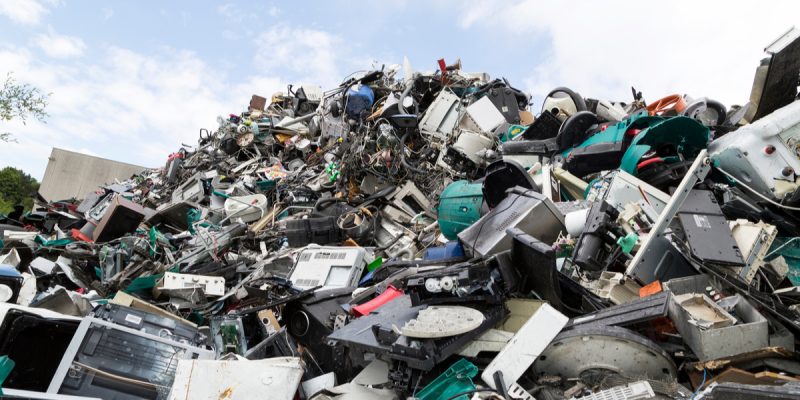According to the UN's Global E-waste Monitor 2020, 2.9 million waste electrical and electronic equipment (WEEE) was generated in 2019 on the African continent. A real danger to both health and the environment, as Africa has a serious lack of policies and structures to manage and recycle WEEE.
The new Global E-waste Monitor report, issued on July 2, 2020, calls on African leaders to take urgent action on waste electrical and electronic equipment (WEEE). The production of such waste has reached worrying proportions, due to the soaring urbanisation and digitalisation of African societies. In 2019, for example, the amount of waste with a battery or power outlet reached 2.9 million tonnes. That is 2.5 kilograms per capita in 49 African countries.
In addition to this waste produced by Africans, there are millions of tons of electronic waste that continues to be illegally exported to several African countries by European and American countries, under the so-called “second-hand equipment” label. One of the recent cases occurred on June 29, 2020. The Spanish Civil Guard had announced the arrest of 34 people on the islands of Tenerife (Spain) off the west coast of Africa on suspicion of illegally exporting 2,500 tons of electronic waste to Nigeria and seven other African countries.
Recycling is urgent
Faced with the overflow of electronic waste, the UN recommends in its 3rd report of the Global E-waste Monitor, the adoption of regulations and recycling programmes. This approach is still very insufficient on the continent, because only 13 African countries out of the 43 studied have a national policy of regulation and management of electronic waste in compliance with environmental and health standards. This means that gold, silver, copper, platinum and other high-value recoverable materials conservatively estimated at US$3.2 billion, have mostly been dumped or burned, instead of being collected for treatment and reuse.
The report also addresses the rest of the world. The world achieved a record 53.6 million tonnes of e-waste produced in 2019. The lion’s share went to Asia, which generated some 24.9 million tonnes, followed by the Americas (13.1 million tonnes) and Europe (12 million tonnes).
The Global E-waste Monitor 2020 is a collaboration between the International Telecommunication Union (ITU), the Sustainable Cycles (SCYCLE) programme currently co-organised by the United Nations University (UNU), the United Nations Institute for Training and Research (UNITAR) and the International Solid Waste Association (ISWA).
Boris Ngounou






